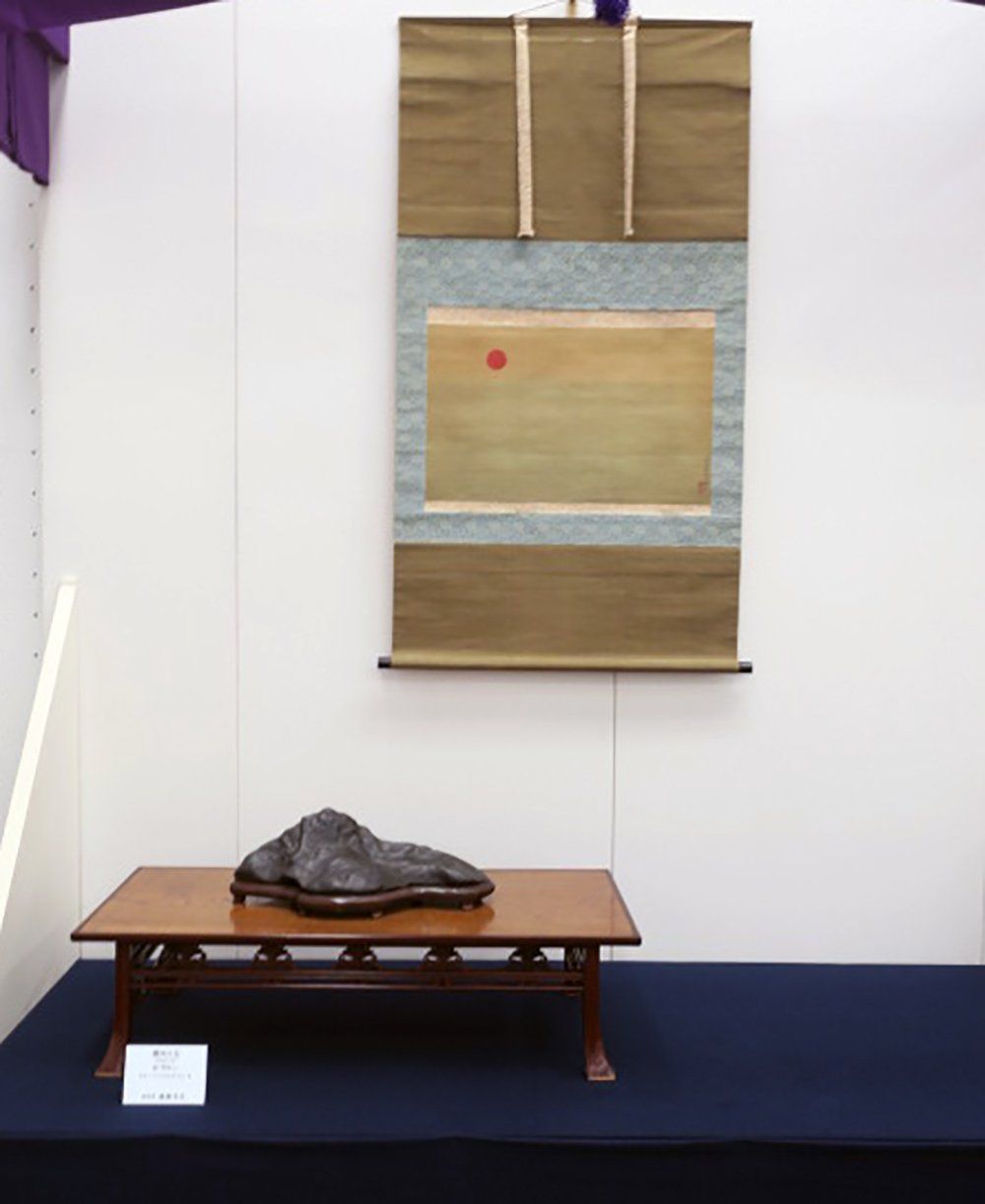Elements of Success-The Sixth Japanese Suiseki ExhibitionAn Overview of the 2019 National Stone Exhibition in Tokyo
By Thomas S. Elias, March, 2019
(top) Seta River stone; (mid l) Bronze tray by Harada Hou; (mid r) Japanese Seigaku stone; (bottom l) Invited Bonseki display; (bottom r) Ibi River stone.
The majority of the exhibit space is devoted to general displays of members’ stones either in a tokonoma-like display space with a scroll or in smaller individual spaces without scrolls. Thirty-two tokonoma displays were included in the exhibition this year. In addition, there were 82 stones displayed by Japanese members of the association and 17 stones displayed for foreign members of the organization. In the 2014 exhibition, there were 28 tokonoma displays, 124 stones in the general display by Japanese collectors and 10 stones by foreign collectors. These numbers reflect the growing interest among foreign collectors to display their stones at this event, but show a continuing decline in the number of Japanese stone collectors participating.
The final element in this successful exhibition is the publication of a catalog of the stones and other items displayed in this event. The association photographs the stones several months in advance, prepares commentary on each stone, and publishes an attractive catalog in time for the opening of the exhibition in early February. This documentation is an important record of this event and, also, serves as a verification that the stones entered by foreign participants are on par with those held by Japanese members.
Finally, this exhibition requires long hours of advance planning and coordination. Securing the loan of the special exhibits takes months or even years of negotiations plus knowledge of where, and by whom, these stones are held. Many serious collectors and institutions do not normally publicize the stones they own. Likewise, the cost of renting space in the Tokyo Metropolitan Art Museum, providing insurance, and hiring professional to help set up the exhibition is expensive. To offset the costs, the association charges a judging fee for each stone and the equivalent of $1,000 to display a stone in a tokonoma space and $500 to display a stone in a smaller display space.
The efforts of the Japan Suiseki Association to bring viewing stones from a hobbyist’s activity and into the realm of art world is highly commendable. The global viewing stone communities should actively support this effort and participate in this annual event whenever possible. The long-term success of these exhibits raises the status of viewing stone appreciation for everyone.


